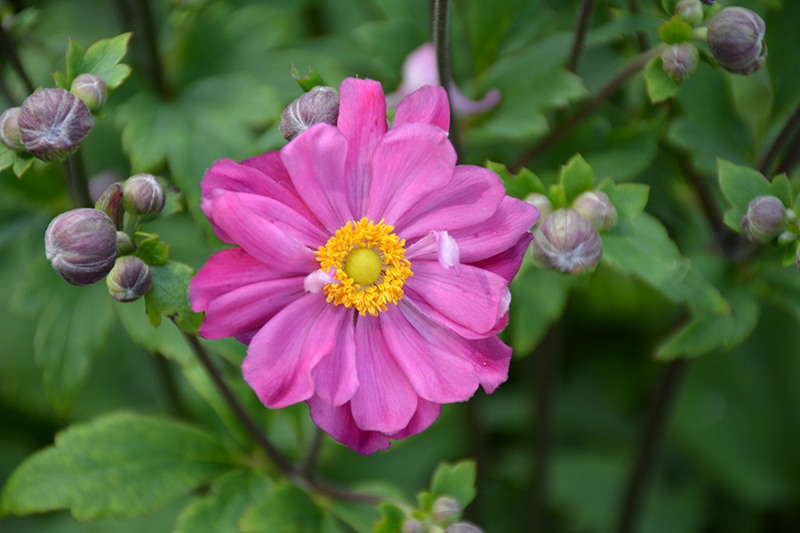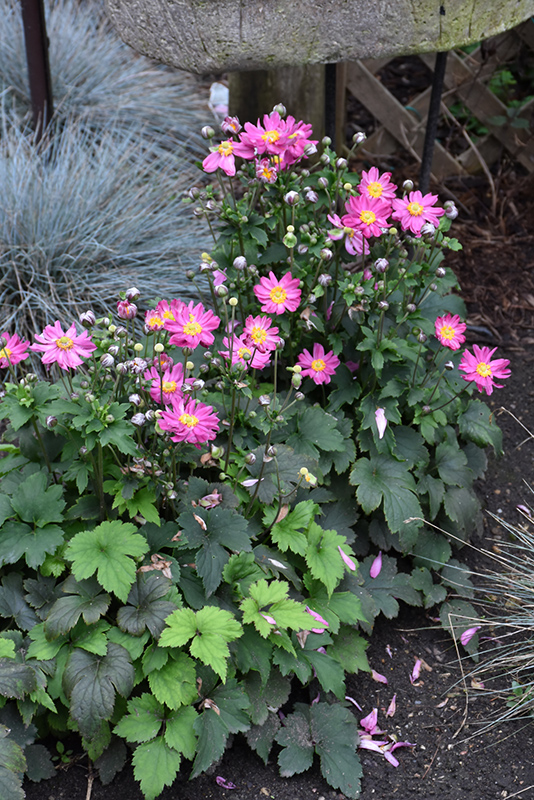VANDERMEER
PLANT LIBRARY
Find the perfect plant for your space by browsing through this extensive selection that we typically carry every year.
This library is for information purposes only.
Curtain Call Deep Rose Anemone
Anemone 'Curtain Call Deep Rose'
Height: 18 inches
Spacing: 14 inches
Sunlight:
![]()
![]()
Hardiness Zone: 4a
Other Names: Windflower
Group/Class: Curtain Call Series
Description:
This fall blooming variety forms a dense clump of ferny foliage, then produces intense, rose-pink, poppy-like flowers on shorter stems, very pretty when massed in the garden or along borders as well
Ornamental Features
Curtain Call Deep Rose Anemone is smothered in stunning semi-double rose buttercup flowers with chartreuse eyes and gold centers at the ends of the stems from late summer to early fall. The flowers are excellent for cutting. Its ferny leaves remain green in colour throughout the season. The black stems can be quite attractive.
Landscape Attributes
Curtain Call Deep Rose Anemone is a dense herbaceous perennial with an upright spreading habit of growth. Its relatively fine texture sets it apart from other garden plants with less refined foliage.
This is a relatively low maintenance plant, and is best cleaned up in early spring before it resumes active growth for the season. It is a good choice for attracting bees and butterflies to your yard. It has no significant negative characteristics.
Curtain Call Deep Rose Anemone is recommended for the following landscape applications;
- Mass Planting
- General Garden Use
Planting & Growing
Curtain Call Deep Rose Anemone will grow to be about 14 inches tall at maturity, with a spread of 18 inches. When grown in masses or used as a bedding plant, individual plants should be spaced approximately 14 inches apart. Its foliage tends to remain dense right to the ground, not requiring facer plants in front. It grows at a medium rate, and under ideal conditions can be expected to live for approximately 10 years. As an herbaceous perennial, this plant will usually die back to the crown each winter, and will regrow from the base each spring. Be careful not to disturb the crown in late winter when it may not be readily seen! As this plant tends to go dormant in summer, it is best interplanted with late-season bloomers to hide the dying foliage.
This plant does best in full sun to partial shade. You may want to keep it away from hot, dry locations that receive direct afternoon sun or which get reflected sunlight, such as against the south side of a white wall. It does best in average to evenly moist conditions, but will not tolerate standing water. It is not particular as to soil type or pH. It is somewhat tolerant of urban pollution. Consider applying a thick mulch around the root zone in both summer and winter to conserve soil moisture and protect it in exposed locations or colder microclimates. This particular variety is an interspecific hybrid. It can be propagated by division; however, as a cultivated variety, be aware that it may be subject to certain restrictions or prohibitions on propagation.







